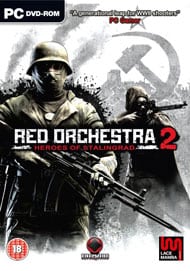World War II In Reality
It’s hard not to feel conflicted about Red Orchestra 2: Heroes of Stalingrad. It is obviously a labor of love for developer Tripwire, and it contains plenty of great ideas that few other games have tried. Both of these attributes are rare in modern first-person shooters, especially shooters set in World War II.
But thanks to a small budget, Red Orchestra 2 feels incomplete, despite the many years it spent in development. It’s a few major patches away from being a great multiplayer experience, and I couldn’t get much enjoyment out of the single-player mode at all.
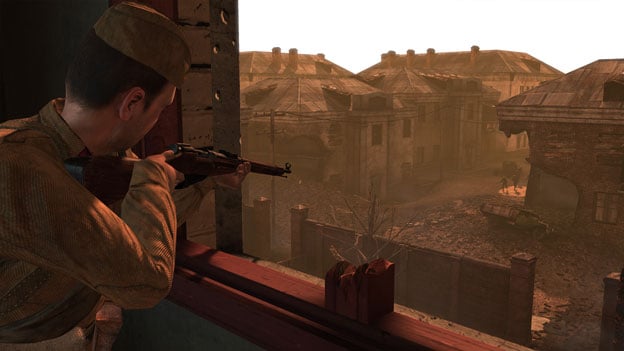
I have a great deal of respect for all of the things Red Orchestra 2 does for the first-person shooter genre, so I’d like to start there. To me, the most important development is a first-person cover system. As shooter fans know, most cover-based games have been set in the third person—and even Rainbow Six Vegas, a rare first-person game with a cover system, pulls out to a third-person view whenever you hide behind a protective barrier.
RO2’s cover system is so simple and effective that it’s amazing no other developer came up with it first. You push an action button to get into cover, and unlike in a third-person game, you can’t see what’s going on unless you stick your head out and risk getting shot. You can shoot blindly if you’re just laying covering fire, but otherwise you have to lean out and aim. There are problems with execution here—sometimes going in or out of cover can be glitchy, and sometimes you can’t take cover where you clearly should be able to. But this is, by far, the most realistic representation of cover ever in a video game.
RO2 also offers unparalleled realism in a variety of other ways. There’s no real HUD (though you’ll see bars that represent your energy when you run and your health when you get hit). There are no crosshairs on the screen to guide your attempts to run-and-gun. You have to bandage yourself quickly if you’re shot non-fatally, and close encounters with enemies are over quickly. Even the tanks are realistic, painstakingly designed to resemble real tanks.
The guns are carefully designed to mimic their real-life counterparts too, right down to their range, bullet drop, and iron sights. With many weapons, you’ll need to adjust the sights to hit targets at different distances. Your hands wobble realistically, adding another layer of difficulty to hitting what you’re aiming at. With no HUD, you have to check your gun to see how much ammo you have.
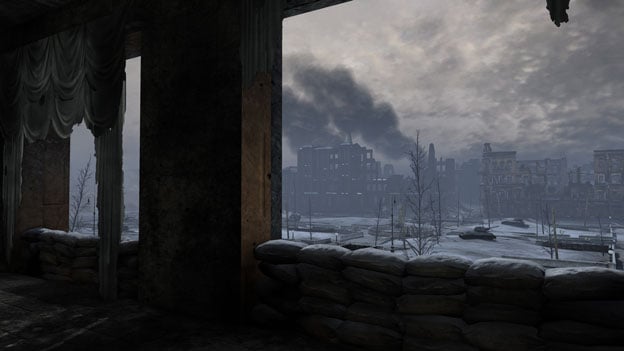
In the game’s best multiplayer moments, all of this works. This is one of the few FPSes on the market that truly requires focus and teamwork. To be frank, when I play FPSes online, I usually get the sense of ten or twenty people randomly milling about, killing each other when they get the chance. In RO2, I get the sense that slower-paced, tactical gameplay is truly rewarded. You can’t get ahead without keeping yourself out of the line of fire and changing your strategy to fit the type of gun you’re carrying. And the experience of shooting from a hyper-realistic tank is amazing.
Not to mention the fact that these are large-scale battles, with up to 32 players on each of two teams. There are three modes: Firefight, or team death match; Territories, in which you attack and defend objectives; and Countdown, a single-life mode in which one team tries to accomplish various objectives while the other team resists. There’s also character progression for stats junkies. You can become a “hero,” which gives you access to better weapons, along with a stats boost to the people around you.
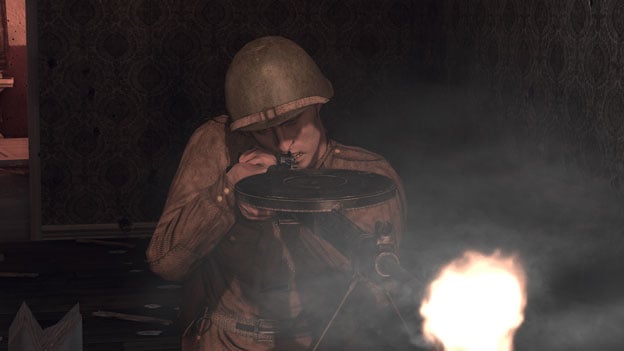
That’s in the game’s best multiplayer moments. But there are not-so-great moments as well.
Cheat Code Central’s (souped-up) computer seemed to work well with the RO2 servers—I managed to find and join games in no time at all. However, other gamers haven’t been so lucky: Many have reported that the server screen makes their game crash, and that they have to choose between a low frame rate and low-quality graphics settings once they start playing.
Also, despite the game’s aggressive stance toward “punk busting,” the maps themselves often reward subtler forms of cheating, especially spawn camping. Before you learn the maps, you’ll spend a lot of time spawning, running toward the sound of gunfire, and getting sniped by someone you can’t even see. Further, the glitchiness of the cover system can result in unfair deaths, and some players seem not to use it at all. Sometimes, the game won’t let you mount a machine gun or go prone in locations where you should be able to.
These are problems that can be fixed with patches, and Tripwire is known for post-release support; they’ve already promised free updates with new tanks, another campaign, challenges, and co-op. We can look forward to great mods as well. But it’s hard to spend $40 ($50 for the deluxe edition) on a game for what it might become, rather than what it is.
The single-player campaign, meanwhile, is quite frankly a mess. It’s divided into two parts, a German campaign followed by a Russian one. (Like most other games that allow you to play as a WWII-era German, RO2 is devoid of explicit Nazi references.) All in all, it feels like playing a multiplayer game with bots.
The campaign takes place on the very same maps as the multiplayer, which doesn’t really work—in a shooter game, multiplayer maps should be like a playground, whereas single-player maps should offer a somewhat guided experience. Even fully open-world games make sure that missions unfold along a path that makes sense. In RO2, on massive maps, you’re given a series of objectives to complete, which usually amount to “clear this building, and then that building, and then that other building.” The best bet is usually to just follow your teammates, but before you learn the maps, it’s easy to end up in the wrong area, with no enemies to shoot while the rest of your team handles the objectives.
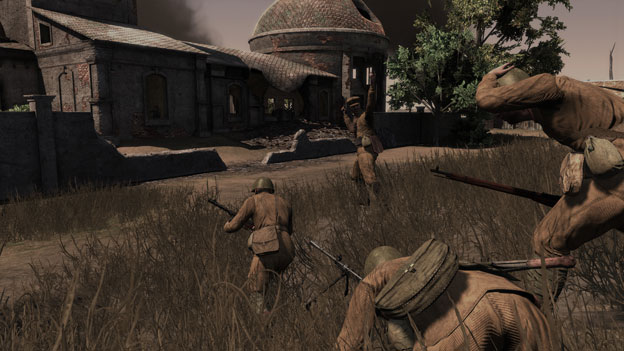
The team-based nature of the missions is also a problem, especially considering that co-op functionality hasn’t been added yet and the A.I. is spotty at best. Whenever you die, you don’t go back to a checkpoint; instead, you’re reincarnated as someone else on your squad. Factor in the steady stream of reinforcements to replace dead comrades, and death is practically consequence-free, at least until you try higher difficulties and can actually run out of teammates before reinforcements arrive.
It’s clear that the developers started with a multiplayer experience, and then tweaked it to make a campaign, rather than building a campaign from the ground up. Constantly respawning makes sense in deathmatch, where the point is to kill the enemy more often than he kills you; it doesn’t work in a single-player mode, where the point is just to make it to the end of the level. A standard checkpoint system would have been far preferable.
After the first mission, you’re given a quick tutorial on the commands you can give your fellow soldiers. Since I don’t have the patience to play on higher difficulties, I honestly didn’t use them much—as stupidly as the A.I. characters can act, they usually at least stay in the action and try to kill bad guys. But nonetheless, I found these controls pretty clunky; they require you to hold one of two buttons and then click your commands on the screen. I much preferred the simplicity of Rainbow Six Vegas and Ghost Recon: Advanced Warfighter, where you have only a couple of guys under your command and only a few instructions to give.
In addition, the single-player campaign forces you to appreciate the unrealistic things that most FPSes do. It’s simply frustrating to die after one or two shots from an enemy you can’t even see, even if that’s what would really happen in battle. HUDs keep track of stats for you and let you focus on the parts of the game that are actually fun. Objective and enemy markers keep you from having to roam around aimlessly to find what you’re looking for, and prevent you from shooting friendlies by accident. And so on.
Presentation-wise, RO2 is serviceable, but won’t turn any heads. The graphics look a bit dated, especially if your machine can run them in “ultra” mode. Sometimes, objects seem to go right through each other. The sound effects feel realistic, however, and the dynamic music is a perfect fit.
Red Orchestra 2 is an immensely ambitious game, and in some ways, it’s even a groundbreaking one. However, its focus on realism will turn off fans of arcade shooters, and the developers will have to do some patching before everything truly clicks. If you want a hardcore multiplayer FPS that thoroughly immerses you in the Battle of Stalingrad, this could be the game for you—someday.
RATING OUT OF 5 RATING DESCRIPTION 3.2 Graphics
It looks passable on high-end PCs, but on other machines, players have reported frame-rate problems and being forced to use lower settings. 3.3 Control
It’s standard FPS controls for the most part, and the guns feel good to shoot, but the squad commands are clunky. 4.5 Music / Sound FX / Voice Acting
The sound effects are great, and the dynamic music is a perfect fit. 3.4 Play Value
The multiplayer mode is impressive but needs patching, and the single-player mode isn’t fun. 3.4 Overall Rating – Fair
Not an average. See Rating legend below for a final score breakdown.
| Review Rating Legend | |||
|---|---|---|---|
| 0.1 – 1.9 = Avoid | 2.5 – 2.9 = Average | 3.5 – 3.9 = Good | 4.5 – 4.9 = Must Buy |
| 2.0 – 2.4 = Poor | 3.0 – 3.4 = Fair | 4.0 – 4.4 = Great | 5.0 = The Best |
Game Features:
